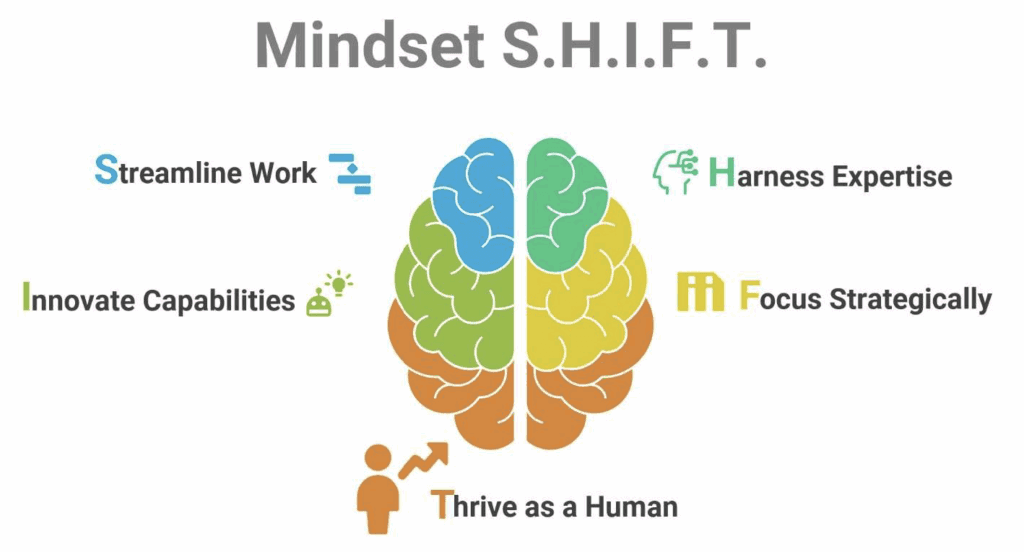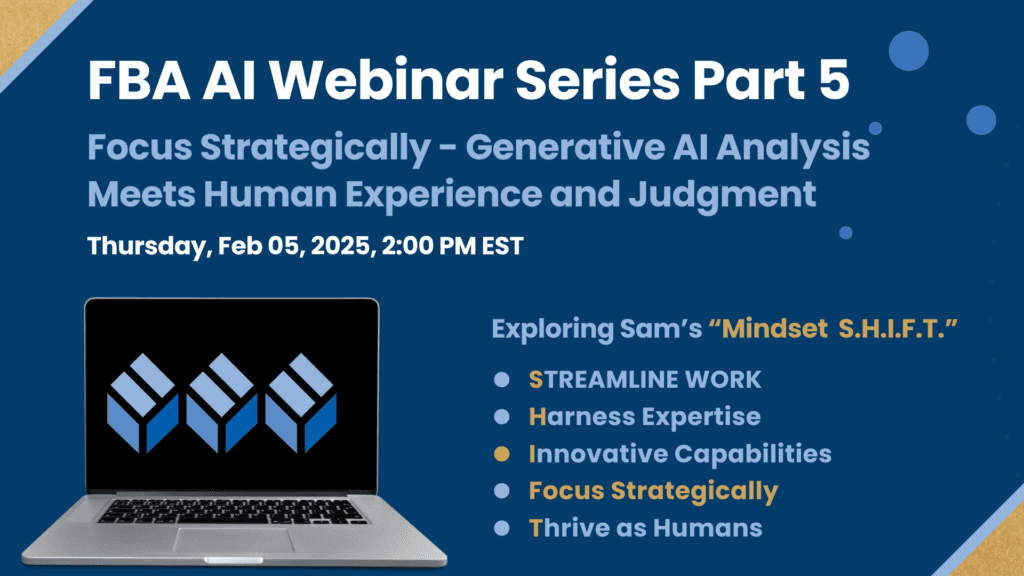
AI for the Corrugated Industry
FBA AI Webinar Series With Sam Richter
FBA has partnered with Sam Richter, one of the world's foremost experts on AI-powered digital information, an award-winning Hall of Fame speaker and bestselling author to help our industry better utilize this constantly evolving tool.

Generative AI is transforming our world at a speed never before seen in history. For the first time, everyone has unprecedented access to harness and shape data, forever changing the landscape of business and lives. Discover how to actually use these powerful technologies and unlock the opportunities that will redefine how you live, work, and connect.
Following up on Sam Richter’s thought-provoking keynote presentation given at the FBA 2025 Annual Meeting, FBA and Sam have partnered to create a six-part webinar series to help the corrugated industry better understand and utilize this constantly evolving tool through Sam's "Mindset S.H.I.F.T.", a framework providing a practical, human-centered journey that acknowledges this new reality. It maps the progression from leveraging basic Generative AI tools to partnering with sophisticated Generative AI Agents, ultimately empowering professionals to lead with creativity, strategy, and purpose. SHIFT outlines five key stages: Streamline, Harness, Innovate, Focus, and Thrive. It’s a guide for moving from doing to directing, from execution to elevation.
- Streamline work
- Harness expertise
- Innovative capabilities
- Focus strategically
- Thrive as humans.
We look forward to diving deeper into the fascinating world of AI with you.
Register for Our Latest AI Webinar
Part 5: Focus Strategically: Generative AI Analysis Meets Human Experience and Judgment

The “F” stage is where Generative AI evolves from a helpful assistant into a powerful analytical partner, enabling sharper, faster, and more strategic decision-making. At this level, Generative AI is used to process vast datasets, model complex scenarios, and surface patterns that humans might miss on their own. The human role shifts from executing tasks to interpreting insights, applying strategic judgment, and making informed, high-stakes decisions grounded in ethics and experience.
The “F” stage is all about ensuring strategy is driven by both data and human insight.

Previous Webinars
Part 1: Unleashing Creativity through Utilizing Generative AI
During this introduction to our AI series, Sam Richter guided attendees through the history of GPT and AI, teaching them how to utilize this ever-changing tool to benefit their businesses.
Topics included: The difference between AI and Generative AI, How Generative AI creates a "Mindset S.H.I.F.T.", Practical AI tools you can start using immediately, and A forward-looking view into our Generative AI future
Part 2: Unleashing Creativity through Utilizing Generative AI
The Mindset SHIFT journey begins with embracing readily available Generative AI tools such as ChatGPT, Claude, Gemini, Copilot, and others to handle the simple, repetitive tasks that consume time but add little strategic value. These tools act as digital assistants, capable of drafting emails, summarizing documents, creating reports, and streamlining everyday activities across departments.
The goal of the 'S" stage isn’t to overhaul workflows, but to reclaim valuable time by offloading routine responsibilities. By doing so, professionals free themselves to focus on higher-impact work, while building confidence and familiarity with how Generative AI can serve as a practical partner in day-to-day task execution.

Part 3: Harness Expertise: Smarter Outputs Through Guided Generative AI
Once teams become comfortable using basic Generative AI tools, the “H” stage in the Mindset SHIFT involves enhancing those tools with the unique expertise, context, and voice of the organization. Instead of relying on generic prompts and outputs, professionals begin guiding Generative AI with company-specific knowledge, such as internal processes, brand tone, customer personas, financial information, custom templates, and strategic frameworks.
The "H" stage is more than just harnessing internal expertise. It's also about tapping into specialized tools that amplify internal knowledge.

Part 4: Innovative Capabilities: Creating the New with Generative AI
The “I” stage is the breakthrough stage, the point in your Mindset SHIFT journey where Generative AI stops enhancing the past and starts inventing the future. No longer limited to task automation, professionals across departments are now building entirely new assets, solutions, and capabilities with AI, many of which were previously impossible without technical expertise, deep resources, or weeks of production time.
The “I” stage is where creativity is unleashed. If you can imagine it, Generative AI can help you make it real.

Upcoming Webinars
Part 6: Thrive as a Human: Combining Knowledge and Wisdom
In the final stage of the Mindset SHIFT journey, Generative AI tools and sophisticated AI Agents take over routine, repetitive, and even cognitively demanding workflows, creating space for human professionals to step fully into the roles only they can fill. These Agents, designed to work autonomously toward goals not just respond to single prompts, can also manage reporting, execute multi-step processes, monitor systems, adapt outputs in real time, and even make recommendations based on embedded logic and data streams.
In this “T” stage, humans aren't just supported by Generative AI, they are elevated by it.
